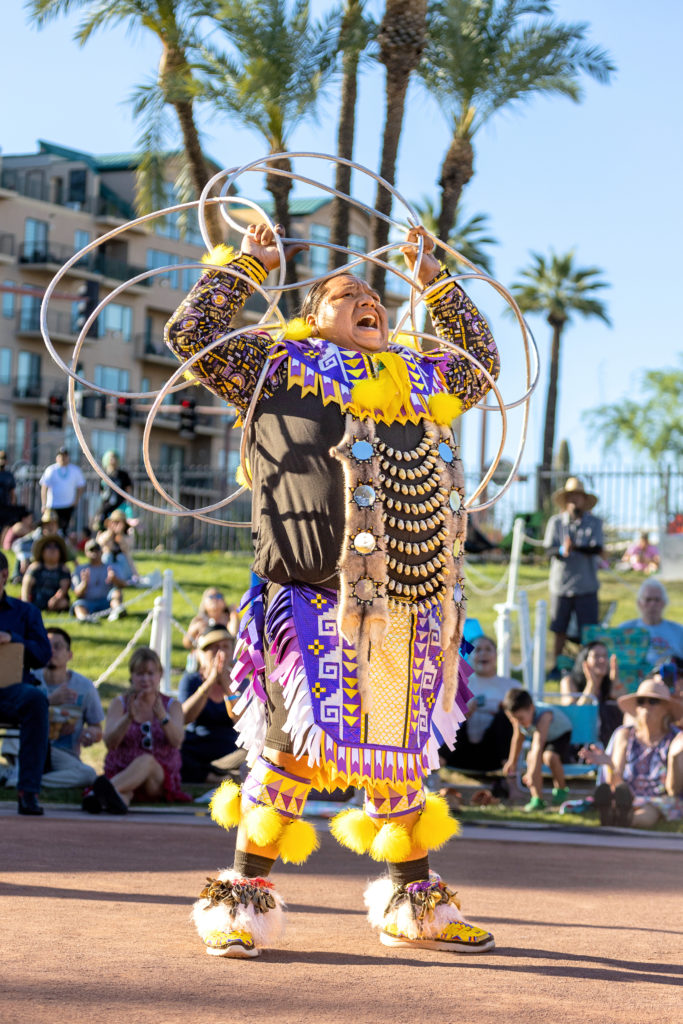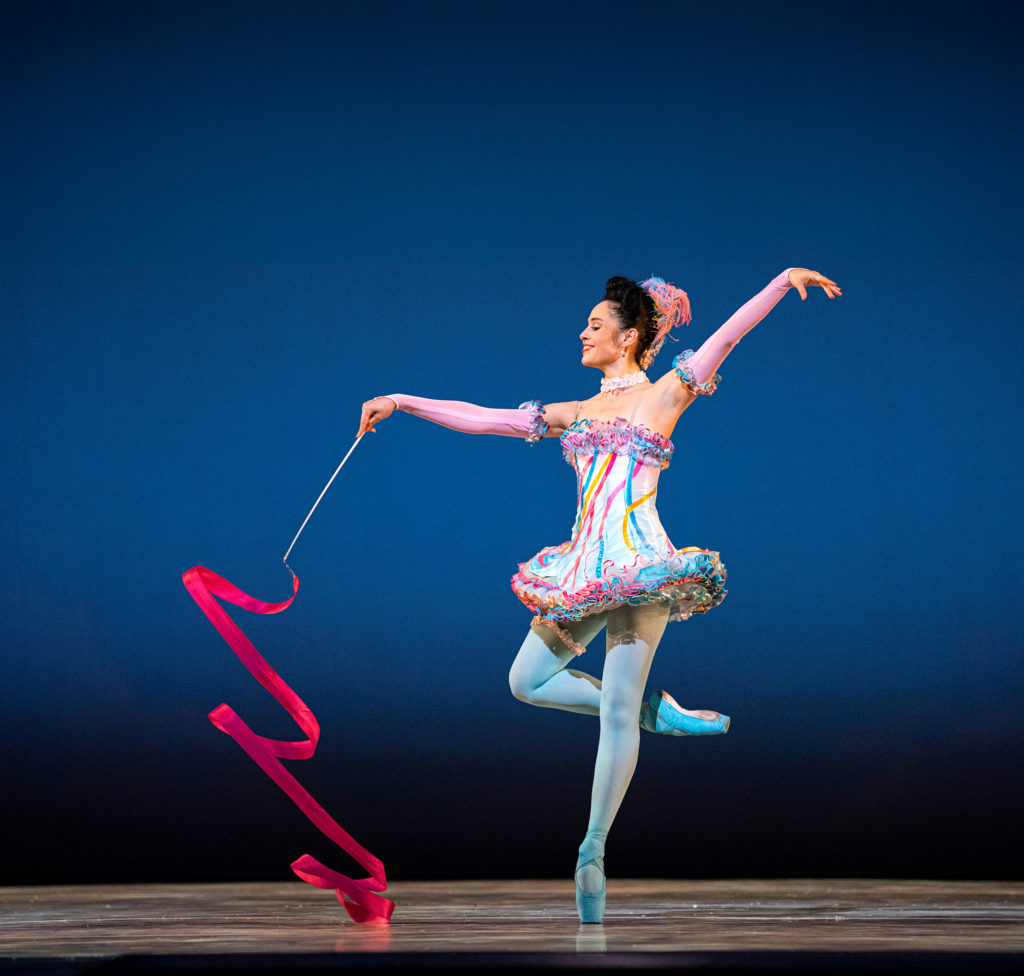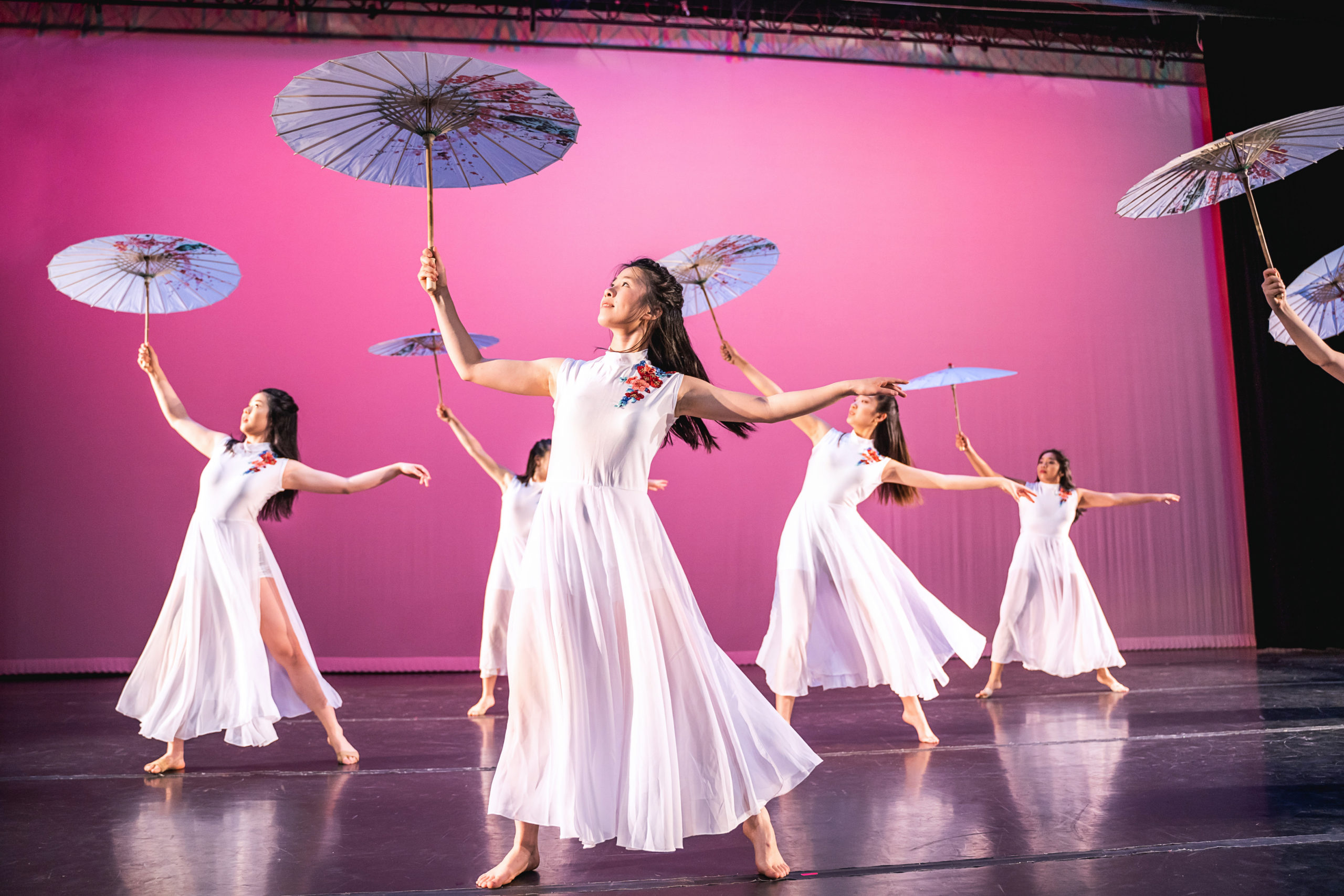How to Use Props to Enhance Your Dancing, Not Hinder It
The first season San Francisco Ballet corps dancer Ludmila Bizalion performed the company’s French (or Mirliton) Nutcracker divertissement, which entails twirling a long, handheld ribbon while doing pirouettes and can-can high kicks, she ended one performance wrapped up in her ribbon and unable to take her bow. “My mom, who was in the audience, thought it was hilarious,” she remembers. “But that day really changed the way I saw props.”
Dancing with a prop can be intimidating, and when the choreography is already complex, adding an object to the mix can feel, frankly, overwhelming. But with the right approach, props can be an exciting opportunity for growth in artistry, storytelling and performance technique.
Practice, Practice, Practice
You probably didn’t nail your first fouetté turn or feel completely confident the first time you tried contact improvisation. Dancing with a prop, even if you’re adding it to steps you’ve been perfecting for years, is no different. Incorporating an object into a piece of choreography is a skill all its own—and one that requires a lot of practice.

Sampson Sixkiller Sinquah is a decorated champion in hoop dance, a traditional and intertribal Native American dance form that uses hoops to create intricate shapes and formations. “First, you just have to get used to what you’re using, and the more you practice, the easier it gets and the smoother it will be,” says Sinquah, who has been hoop dancing since he was 4 years old and still devotes himself to active, focused training. “Just practice and practice until the prop feels like a part of you, like an extension of yourself.”
Bizalion suggests getting familiar with your prop even before rehearsals begin; if you can, get a video of the dance and a rehearsal prop to borrow. You can ease into dancing with a prop, she says, by beginning with an object that is smaller or less complicated to control. You can even try an activity that complements your prop choreography. Sinquah finds that jumping rope helps him harness the movements required in hoop dancing.
Tap Into Proprioception
When you dance with a prop, the way your body moves will likely change. You might have to get used to additional weight in one hand, or attune yourself to an object that makes the size of a specific part of your body seem larger. These adaptations can complicate how you execute choreography.
When Carolyn Zhang danced with the University of Pennsylvania’s Pan-Asian Dance Troupe, whose work combines Asian dance styles and martial arts with other forms, like contemporary and hip hop, she performed with props ranging from swords and fans to the long, bamboo rods used in tinikling, a traditional Filipino dance. Zhang recommends treating your prop like a part of your body, feeling the way it changes your weight, spatial orientation and movement.
“I always think about how my body moves and how my weight settles,” she explains. “The prop is just an extension of that.” She adds that starting with simple, basic movements is a helpful way to learn how the object itself moves, how heavy it is and how efficiently you can manipulate it. Add choreography bit by bit so that learning to work with your prop feels less overwhelming and becomes more intuitive.
Cultivating Artistry
Working with a prop can feel stressful, or even like a burden that can make you anxious about a performance. But when approached with an open mind and a curious attitude, dancing with an object can actually unlock a wealth of creativity.
“Props can be a limitation, but also an enhancement, and it kind of depends on the choreographer and dancer to decide which it is,” says Lina Shi, another Pan-Asian Dance Troupe alum. Zhang adds that props are a key element in Pan-Asian Dance Troupe’s repertoire, even strengthening the choreography and its connection with the group’s cultural roots. “A lot of Chinese dance is very grounded and takes a lot of inspiration from nature, like trees and rivers,” she explains. “The prop is just another way for us to mimic those things.”
Props can also be a way to immerse the audience into the story being told onstage. Bizalion, for example, says that props like the fans in Don Quixote connect her more with the spirit of her character. Shi adds that through the use of props, Pan-Asian Dance Troupe is able to share the beauty of Asian dance in a different way than they could through movement alone. “Props can definitely be used as a sense of storytelling,” she says, “to create a message that our body can’t necessarily portray by itself.”

Pas de Prop
Dancing with a prop can be similar to dancing with a new partner. “That prop is part of life onstage,” says Ludmila
Bizalion, a member of the corps de ballet at San Francisco Ballet. “It’s alive on its own.” Bizalion recommends starting by marking the choreography with your prop to tune into the way it affects your spatial awareness, balance and coordination. At the beginning of each Nutcracker season, she runs through the Mirliton variation with just her upper body, so she can get reoriented with the momentum of the ribbon and how she needs to move to essentially perform a duet with it.





